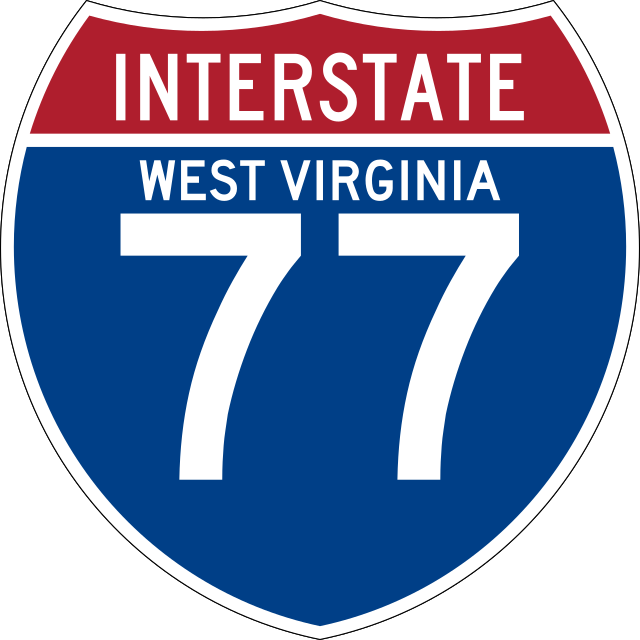Content deleted Content added
m |
|||
Line 67: ==History== ===Original construction=== ====As the West Virginia Turnpike====▼ [[File:The Yeager Bridge on the West Virginia Turnpike (88733).jpg|thumb|right|Postcard view of the Yeager Bridge]] In the [[Antebellum South|antebellum]] years before West Virginia separated from Virginia, development of adequate roads was a major area of conflict between the western regions and the east. Through the [[Virginia Board of Public Works]], the Virginia state government helped finance turnpikes among its programs to encourage [[internal improvements]], with tolls collected to defray operating costs and retire debt. Principal among these was the east–west [[Staunton and Parkersburg Turnpike]], completed from [[Staunton, Virginia|Staunton]] to the [[Ohio River]] at [[Parkersburg, West Virginia|Parkersburg]] immediately prior to the [[American Civil War]] (1861–1865).<ref>{{Cite web |url = http://www.richmountain.org/history/spt.html |title = Rich Mountain Battlefield History: Staunton-Parkersburg Turnpike |website = www.richmountain.org |access-date = 2019-05-14 |archive-date = October 19, 2020 |archive-url = https://web.archive.org/web/20201019230203/http://www.richmountain.org/history/spt.html |url-status = live }}</ref> However, many of the internal transportation improvements were destroyed during that conflict, leaving bonded debt still to be paid, even as additional progress had ended. After resolution by the [[US Supreme Court]], which assigned a third of the amount due to the new state early in the 20th century, West Virginia was faced with retiring its share of Virginia's antebellum debt for the earlier turnpikes (and canals and railroads) even as the citizens needed and sought better roads.{{cn|date=November 2022}} Line 74 ⟶ 75: The challenge of terrain in West Virginia mirrored that of Pennsylvania in some ways but with several important distinctions. The most important of these was that the first portion of the Pennsylvania Turnpike had largely followed and utilized a [[South Pennsylvania Railroad|costly earlier rail project which had never been completed.]] On the West Virginia Turnpike, there would be no such advantage.<ref name=monday />
[[File:WV Turnpike near Beckley in 1974.jpg|thumb|right|A two-lane segment of the West Virginia Turnpike north of Beckley in 1974]] Originally serviced by railroads and then two-lane highways, by the mid-20th century, the cities of southern and central West Virginia grew to the point where the roadways between these regions were becoming woefully inadequate.<ref>{{Cite web |url = http://www.wvculture.org/hiStory/transportation/wvturnpike01.html |title = Dedication of the West Virginia Turnpike |work = Charleston Gazette Line 83: In November 1951, the final alignment was chosen. The route was {{convert|22|mi|km}} shorter than the original road mileage between [[Charleston, West Virginia|Charleston]] and Princeton but would save motorists over two hours of driving between those two points. Original cost projections came in at $78 million (equivalent to ${{formatprice|{{inflation|US-GDP|78000000|1951}}}} in {{inflation-year|US-GDP}}{{inflation-fn|index=US-GDP}}).<ref name="monday" /> According to the West Virginia Turnpike CAF Report: ▲====As the West Virginia Turnpike==== <blockquote>The Commission issued $96 million [equivalent to ${{formatprice|{{inflation|US-GDP|96000000|1952}}}} in {{inflation-year|US-GDP}}{{inflation-fn|index=US-GDP}}] of {{frac|3|3|4}}% revenue bonds in April 1952, and groundbreaking took place in August of that year. Due to the occurrence of large slides midway through construction that had to be corrected at additional expense, revenue bonds for an additional $37 million [equivalent to ${{formatprice|{{inflation|US-GDP|37000000|1952}}}} in {{inflation-year|US-GDP}}{{inflation-fn|index=US-GDP}}] were sold at {{frac|4|1|8}}%. When ground was broken on the first segment of the turnpike, the northern terminus had once again been moved south. This time, it was placed at Charleston, citing cost as the primary reason. The cost was projected to be $133 million (equivalent to ${{formatprice|{{inflation|US-GDP|133000000|1952}}}} in {{inflation-year|US-GDP}}{{inflation-fn|index=US-GDP}}) and to be funded through bonds that would be repaid through a system of tolls. This cost included $5 million (equivalent to ${{formatprice|{{inflation|US-GDP|5000000|1952}}}} in {{inflation-year|US-GDP}}{{inflation-fn|index=US-GDP}}) for a two-lane tunnel to connect [[Dawes, West Virginia|Dawes]] to [[Standard, West Virginia|Standard]].<ref name="monday" /> | |||
 Article Images
Article Images